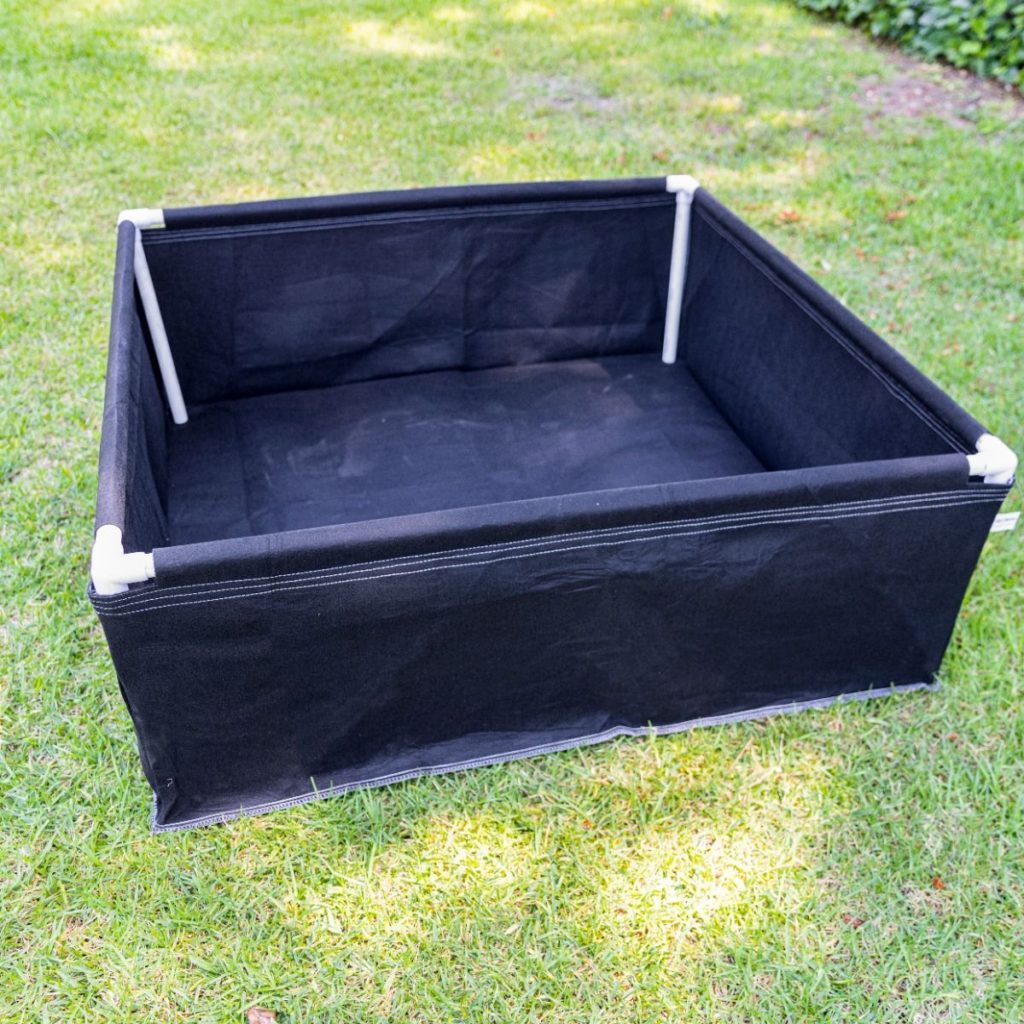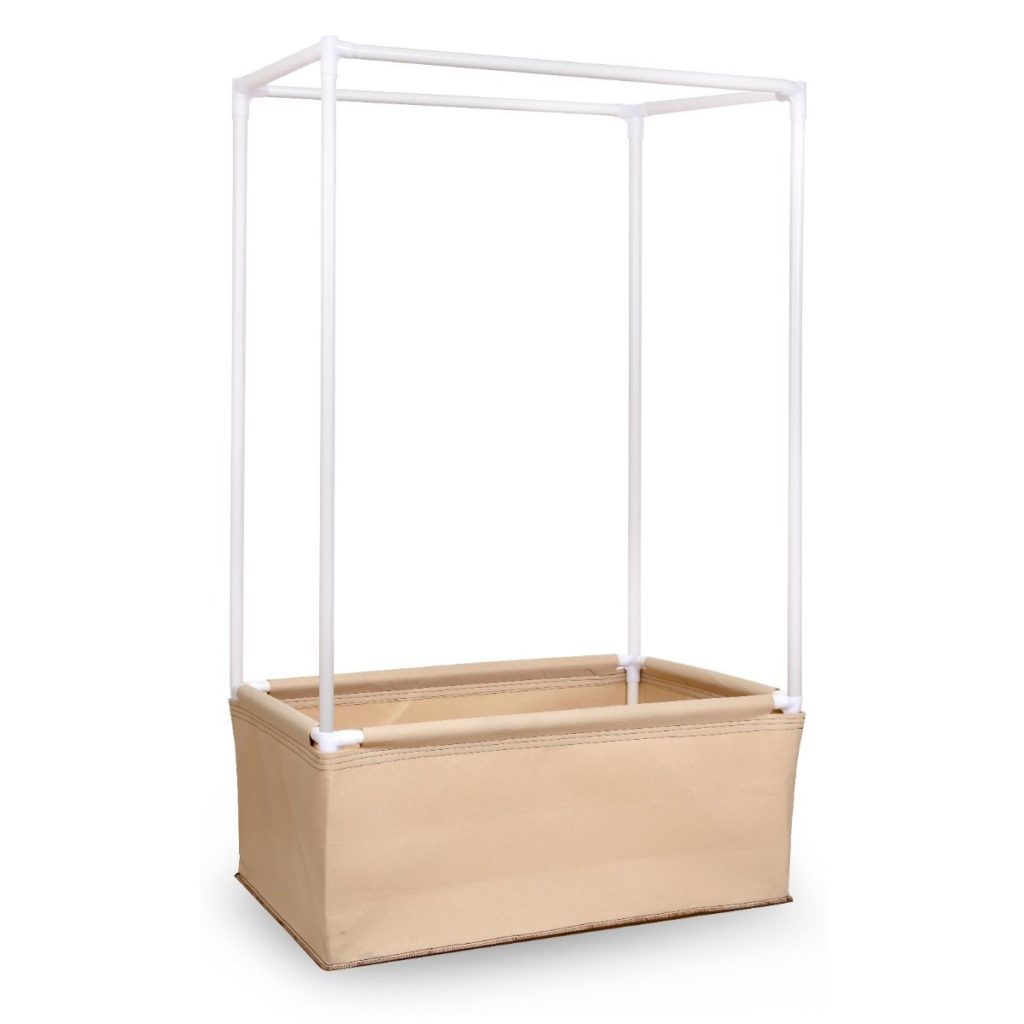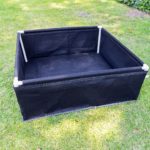The choice between a fabric raised garden bed and a wooden raised garden ultimately depends on your specific needs, preferences, and gardening goals. Both types of raised gardens have their pros and cons, so let's explore them:

Fabric Raised Garden: PROS:
- Portability: Fabric raised gardens are lightweight and portable. You can easily move them around your yard or patio to optimize sunlight exposure or create space for other activities.
- Drainage: Fabric containers typically have better drainage, preventing waterlogging and ensuring adequate moisture levels for plant growth.
- Cost-effective: Fabric raised gardens are often more affordable compared to wooden raised gardens.
- Root aeration: The fabric material allows for better root aeration, which can promote healthier plant growth.
- Easy Assembly: Fabric raised beds are generally easy to assemble and require minimal tools or construction skills. They often come in pre-designed kits that can be quickly set up, making them accessible for gardeners of all levels of experience.
- BPA-Free and Non-Toxic: If made with new, high-quality raw materials like the ones from 247Garden, fabric raised garden beds are typically BPA-free and free from other toxic substances. This ensures that your plants are not exposed to potentially harmful chemicals, making them safer for growing edible crops.
- Versatile and Expandable: Fabric raised beds come in various sizes and shapes, allowing you to choose the dimensions that best suit your space and gardening needs. They can be easily expanded or rearranged to accommodate more plants or fit in different areas of your garden.
- Season Extension: Some fabric raised beds come with the option of attaching covers or hoops, allowing you to create mini-greenhouses or extend the growing season for your plants. This feature can be particularly beneficial in cooler climates or for growing delicate plants.

Fabric Raised Garden: CONS:
- Lifespan: Fabric raised gardens, if made with cheap material, generally have a shorter lifespan compared to wooden ones. They may degrade faster over time due to exposure to sunlight, weather conditions, or wear and tear. If the fabric is at least 300GSM or above, the fabric raised garden can last more than a decade if it's well taken care of.
- Look: Fabric grow bed over time may not look as asthetically pleasing but for practical purposes, fabric raised garden beds are pretty good for the money.
Wooden Raised Garden: PROS:
- Durability: Wooden raised gardens, especially those made from rot-resistant wood like cedar or redwood, can last for many years.
- Versatility: Wooden beds can be built in various shapes, sizes, and heights, allowing for more flexibility in design and accommodating different plants.
- Deep-rooted plants: The deeper structure of wooden beds allows for the growth of plants with deep root systems, such as carrots or tomatoes.
- Customization: Wooden beds can be easily customized with trellises, benches, or other features to enhance your gardening experience.
- More asthethic pleasing: If you care about looking really nice, a wooden raised garden bed definitely is better than fabric raised bed.
Wooden Raised Garden: CONS
- Maintenance: Wooden raised gardens may require periodic maintenance, such as sealing or staining, to protect them from rotting or weathering.
- Heavy and immobile: Once assembled and filled with soil, wooden raised gardens can be heavy and difficult to move.
- Cost: Wooden materials and construction can be a lot more expensive initially compared to fabric containers. A 2X4 PVC-ready fabric grow bed may just cost around $20 from 247Garden vs over $100 for the same 2x4 wooden grow bed if factored in all the time and material cost.
In summary, fabric raised gardens are suitable for those who prioritize portability, cost-effectiveness, and temporary setups. On the other hand, wooden raised gardens are preferable if you seek durability, customization options, and the ability to grow deep-rooted plants. Consider your specific gardening needs, space availability, and long-term goals to make an informed decision.

